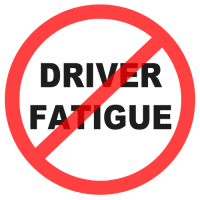Dealing with driver fatigue
 Driver fatigue is a serious issue that can cost lives on the road. There are very specific rules that transport and logistics companies must employ for drivers, but driver fatigue also needs to be accounted for by all of those who share the road.
Driver fatigue is a serious issue that can cost lives on the road. There are very specific rules that transport and logistics companies must employ for drivers, but driver fatigue also needs to be accounted for by all of those who share the road.
The dangers of driver fatigue
Not much has to be said of the very real dangers that driver fatigue can create. A fatigued driver is less alert and less capable of making important, split-second decisions in the event of any travel-related hazard. In addition to this, they’re constantly running the risk of falling asleep at the wheel. Whether they fall asleep for a split second or longer, the consequences can be very severe.
As a point of reference, while microsleep may only occur for a matter of seconds, at much higher driving speeds this can lead to a massive amount of distance travelled while not awake. Say, for example, you’re travelling at 100km/hr, that equates to around 27.8 metres per second. If you were to nod off for a couple of seconds, you would travel more than 50 metres in that short time frame.
No matter which way you cut it, driver fatigue is an absolute danger to all on the road.
Dealing with driver fatigue
When we say dealing with driver fatigue, we mean it in the sense of taking measures to ensure you never drive tired. That way, you mitigate the risk of ever succumbing to such fatigue in the first place.
There are several measures you can take, the first of which is ensuring you get plenty of sleep – especially if you’re travelling long distances over several days. Put simply, you need to go to sleep at a reasonable time at night and aim to sleep for around eight hours. In the morning, allow yourself to properly wake up first before getting behind the wheel, and don’t hesitate to have a cup of coffee if you need that extra kick in the start.
While driving, as soon as you start to feel a bit tired or less focused, stop off at the nearest town or rest stop. This doesn’t necessarily mean you need to go to sleep, but driving for several hours will naturally bring on a level of lethargy after a while. Get out of the car, stretch your legs, have a snack (or lunch), and get back in the car once you feel awake again. If you do feel more tired than usual, a nap can usually provide you the necessary boost to drive for a bit more in the later hours of the day before you stop off to sleep that night.
Make sure you’re staying hydrated, too. Dehydration brings on notable onsets of fatigue and impaired focus, which can often lead you to falsely believe you’re suffering from driver fatigue. Keep the fluids up, and you’ll likely find you’ll feel more alert for longer. And remember that each main meal of the day – breakfast, lunch, and dinner – is incredibly important. Eating regularly keeps energy levels up.
The most important tip/rule worth remembering is that as soon as you start to feel tired, you need to stop – be it for a small rest or sleeping overnight. If there are others with you on the drive, they may be able to take over while you rest; but if you’re by yourself, simply stop, rest, and don’t start driving again until you’re confident you’re acceptably awake and alert once again.